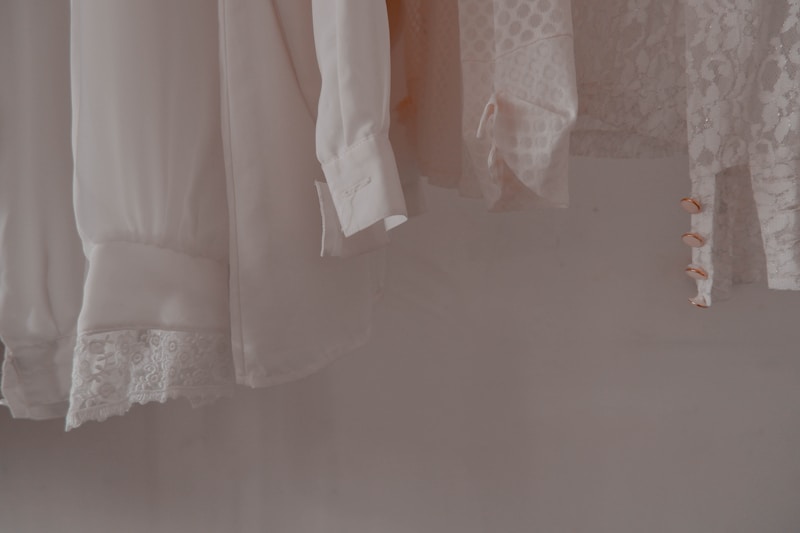Restoring a Damaged Wedding Dress for Preservation: A Complete Guide
Restoring a Damaged Wedding Dress for Preservation: A Complete Guide
Introduction to Wedding Dress Restoration
Your wedding dress is more than just a piece of clothing; it’s a cherished symbol of love and celebration. Over time, however, even the most exquisite Wedding dresses can suffer damage. Whether it’s from environmental factors, age, or accidents, restoring a damaged wedding dress is crucial not only for preservation but also for maintaining its sentimental value. In this comprehensive guide, we’ll explore the processes involved, the importance of professional restoration, and the nuances of preserving your beloved dress.
Why Restore Your Wedding Dress?
The emotional and monetary investment you put into your wedding dress means it deserves the best care. Here are some reasons why restoring your wedding dress is essential:
- Preservation of Memories: A wedding dress captures the essence of a special day. Restoring it allows you to relive those wonderful moments whenever you wish.
- Sentimental Value: Your dress is often passed down through generations, gaining even more emotional value as time goes on.
- Financial Protection: A wedding dress can be a significant financial investment, and restoring it helps maintain its value.
Common Types of Damage to Wedding dresses
Understanding the types of damage that can occur is the first step in the restoration process. Common issues include:
| Type of Damage | Description |
| Stains | Food, drink, or makeup stains can set in if not treated quickly. |
| Fabric Tears | Snags or tears from wear and tear can detract from the dress's appearance. |
| Yellowing | Age and exposure to light can cause whites to turn yellow. |
| Broken Seams | Seams may come undone due to stress or poor construction. |
Steps for Restoring a Wedding Dress
The restoration process can be intricate and often requires professional assistance, but here are some steps you can take:
1. Assess the Damage
Before diving into restoration, take a thorough look at the dress. Identify all areas of damage and make notes. Taking photographs can also be helpful for reference.
2. Cleaning
Start with a professional cleaning service that specializes in Wedding dresses. Dry cleaning may not always be the best option, as it can sometimes harm delicate fabrics. Look for services that use a gentle, non-toxic approach.

3. Repairing Damages
Depending on the extent of the damage, various repairs may be necessary. For minor tears, needle and thread may suffice, but for larger issues, consider sewing or patching techniques by an experienced professional.
4. Preserving
Once your dress is restored, storing it correctly is crucial. Use a breathable garment bag made of cotton, avoid plastic covers, and ensure it’s kept in a cool, dry place. Here are some tips for preserving your wedding dress:
- Store in a dark space to prevent fading.
- Avoid exposing it to direct sunlight.
- Keep it away from strong chemicals and moisture.
The Importance of Professional Restoration
While some minor repairs might be manageable at home, seeking a professional restoration service is advisable for more significant damage. Professionals have the experience, tools, and techniques to ensure your dress is restored to its original beauty without further compromising the fabric. They can also address specialized fabrics like silk, lace, or satin, which require different handling.
Frequently Asked Questions (FAQs)
How much does it cost to restore a wedding dress?
Cost varies based on the extent of damage, the type of fabric, and the repair techniques necessary. On average, restoration can range between $200 to $1,500. It’s advisable to consult with different professionals to get quotes.
Can I restore my wedding dress myself?
If the damage is minimal and you have a sewing background, it may be possible to do minor repairs. However, for significant damage or delicate fabrics, seeking professional help is recommended.
How long does the restoration process take?
The timeframe varies depending on the extent of repairs. Minor repairs might take a few days, whereas major restorations can take several weeks. Always check the estimated timeline with your chosen professional.
Conclusion
Restoring a damaged wedding dress is a significant endeavor, but it is equally rewarding. It ensures that your cherished memories remain intact and that the dress is preserved for future generations. Always opt for professional help when necessary, particularly for complex repairs. Remember, the key to successful restoration is early intervention—you will thank yourself later for not waiting too long to address any damage. Whether you're planning on wearing it again, showcasing it, or passing it along, proper restoration and preservation will keep your wedding dress as beautiful as it was on your special day.
Final Tips for Restoration and Preservation
As you embark on your wedding dress restoration journey, keep these tips in mind:
- Act Quickly: Address stains or damage as soon as possible to avoid permanent issues.
- Choose the Right Professional: Research and read reviews to find a skilled restoration service.
- Document Your Journey: Take photos of the dress during its restoration process to create a keepsake story.
By following these guidelines, you can ensure the longevity and beauty of your wedding dress for years to come.
